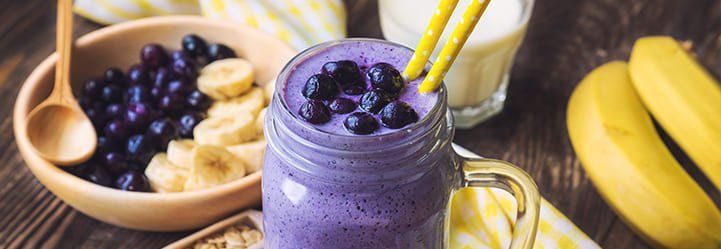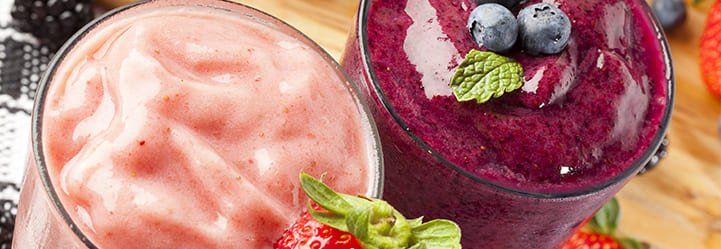Natural ingredients in smoothies: a rising health-driven trend
Alimentos SAS • Oct 20, 2021
Nowadays, consumers are increasingly favoring healthier food choices. They are also interested in convenience products that are practical and useful. These trends are central factors behind the surge in smoothies as functional, healthy options in the market – especially those made with natural ingredients. Read on to discover more about them.
The rise of healthier food
The COVID-19 pandemic accelerated the movement toward more natural products and ingredients. Natural products are synonymous with minimal processing, clean labels, and a sustainable supply chain (Devenyns, 2020).
The trend has been around for a while. Back in 2018, more than half of the consumers looked for products labeled all natural, with no preservatives, or free from artificial ingredients (Devenyns, 2020). From snacks to pie types to drinks, people are leaning more and more toward products made with recognizable, natural ingredients.
In the beverage market, consumers are turning away from carbonated and full-sugar products (Mordor Intelligence, 2020). Instead, they are favoring value-added options like an enhanced nutritional, snack, and functional drinks (Nettle, 2020. Tetra Pak, 2020).
Smoothies stand out in the segment as functional and convenient. Moreover, they open doors for industry players to woo health-driven consumers by using natural ingredients in readily available products.
Smoothies as a healthier option in the beverage industry
Generally speaking, smoothies are thick drinks prepared by blending fruits and vegetables with some sort of liquid. They often include other ingredients, such as seeds, cereals, sweeteners, and supplements (IMARC Group, 2021).
Smoothies seem to be poised for growth. IMARC Group (2021) reports their global market reached a value of 14 billion dollars in 2020. Furthermore, TechNavio (2021) says it will increase by seven billion between 2021 and 2025. According to these firms, multiple factors are driving this performance:
- Consumers altering their everyday diets in line with healthier lifestyles.
- More awareness regarding smoothies’ health benefits.
- A surge in outlets for these products.
- A shift from carbohydrate-rich to protein-enhanced products.
- A rise in functional food consumption to meet daily nutritional needs.
- Growing demand for on-the-go-meal options.
Producers can use a host of different elements to reach the desired taste, consistency, and nutritional content – including natural ingredients.
Using natural ingredients in smoothies
As already mentioned, consumers have been gravitating toward more natural products for some time. But what does ‘natural’ really mean in the food industry?
The International Food Information Council (IFIC) and the U.S. Food and Drug Administration (FDA) (2018) state natural ingredients are those derived from natural sources, like plants or animals. They are found in nature – unlike artificial ingredients, which are synthetically made.
However, not all natural ingredients come straight from the expected source. That smoothie that sports flavors from tastes like tropical fruits may not contain any actual fruit, not even frozen fruits. Often, industry players manufacture ingredients found in nature, as it tends to be more convenient and cost-effective than using the real source (IFIC and FDA, 2018).
They still use natural elements, just not the ones most consumers expect. In reality, they extract chemicals from the natural elements to create flavors reminiscent of actual food (Quora, 2019). The most common processes to do this include fermentation, catalyzing, roasting, and heating any of these sources (Lehman, 2021):
- Dairy.
- Eggs.
- Meat, seafood, poultry.
- Edible yeast.
- Bark, buds, roots, and leaves.
- Vegetables or vegetable juice.
- Fruit or fruit juice.
The result is products with enhanced flavors but a less nutritional value (Lehman, 2021).
Benefits of fruit purees in smoothies
Even if processed natural ingredients lead the way in food manufacturing, some producers are using the real thing. They opt for whole fruit or pre-prepared purees (Silverson, n.d). Such a decision should play well with health-driven, label-conscious consumers who recognize actual produce’s higher nutritional value as an ingredient.
Specifically, fruit puree shines in the industry. It retains taste and nutrients from fresh fruit while being logistically efficient and convenient (Dohler, n.d.). Furthermore, it serves as a healthier sweetener (Grand View Research, 2020). That is why manufacturers use it to make end products and even ingredients for other goods, like cake filling, for instance.
The beverage industry has noticed. Today, it holds the largest volume share of the world’s fruit puree market (29%) (Persistence Market Research, 2021).
The demand for
natural ingredients in food cannot be ignored. Savvy consumers are forcing the food industry to come up with healthier goods made with better raw materials. Smoothies are evidence of this trend – especially when they include nutritional, flavorful elements like fruit puree.















